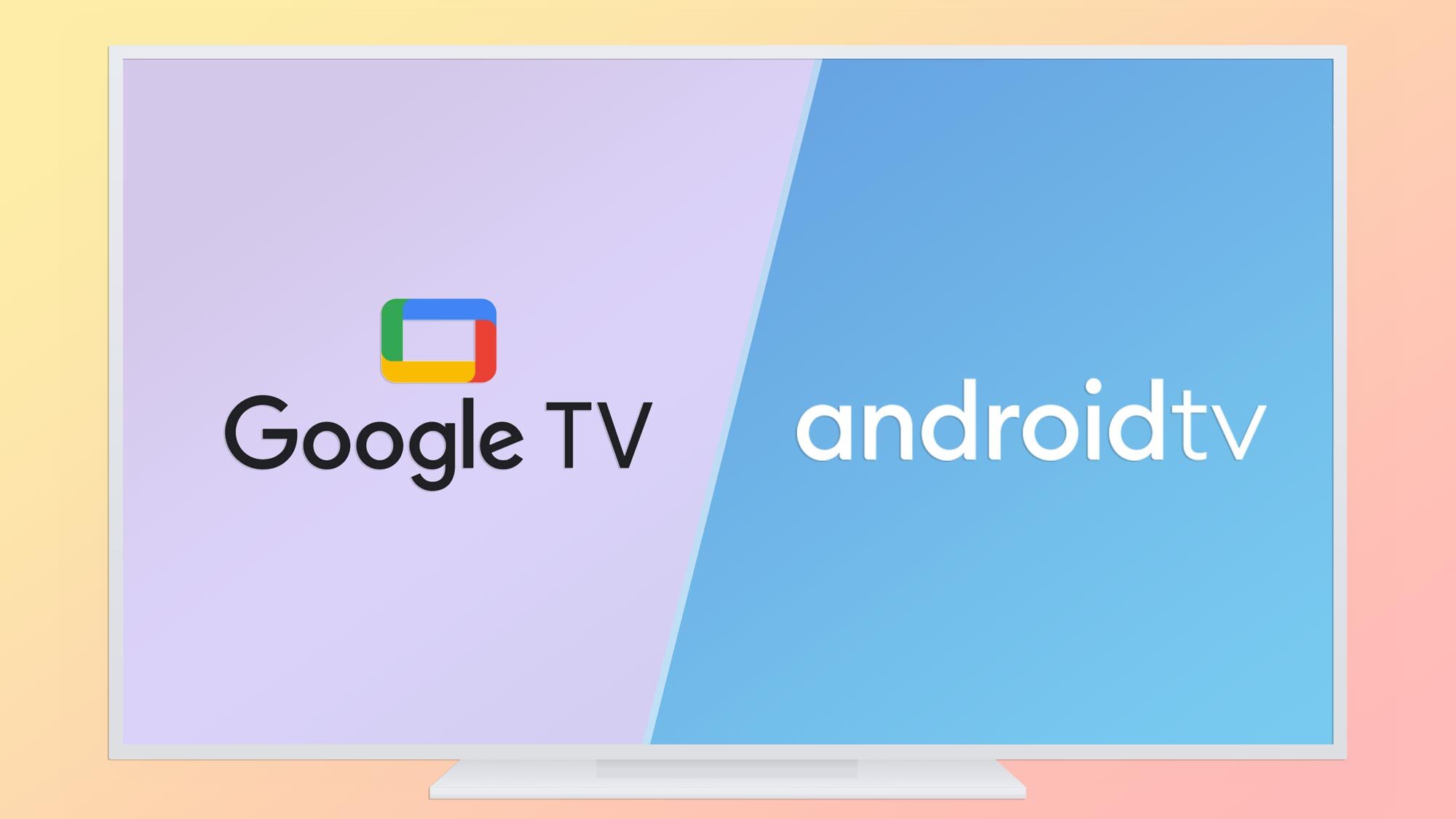Operating System
When it comes to the operating system, Google TV and Android TV have some distinct differences. Google TV is the newer of the two, designed specifically for smart TVs and streaming devices. It provides a more streamlined and user-friendly interface, optimized for a big screen experience.
On the other hand, Android TV is an older platform that has been around since 2014. It was initially developed for smart TVs but has evolved to be used on a wider range of devices, including set-top boxes, gaming consoles, and streaming sticks. It offers a more versatile operating system that can be customized by manufacturers to fit their specific hardware and software needs.
One key difference between the two systems is that Google TV has a revamped home screen, known as the “Discover” tab. This tab aggregates content from various streaming services and suggests personalized recommendations based on your viewing habits. It allows for a more streamlined and organized content discovery experience.
Android TV, on the other hand, has a more traditional layout with separate sections for apps, games, and recommended content. While it may not have the same level of content curation as Google TV, it offers greater flexibility and customization options, allowing users to personalize their home screen and rearrange app icons however they prefer.
Another difference is in terms of the voice control capabilities. Google TV heavily emphasizes voice search and commands, with the support of Google Assistant. Users can simply use their voice to navigate and control their TV, search for content, or even ask general questions. Android TV also supports voice control through Google Assistant but may not have the same level of integration and advanced features as Google TV.
In terms of app compatibility, both Google TV and Android TV offer access to a wide range of streaming apps, including popular services such as Netflix, Amazon Prime Video, Hulu, and Disney+. However, it’s worth noting that Google TV places more emphasis on integrating subscription services and content recommendations, making it easier and more convenient for users to find and access their favorite shows and movies.
User Interface
The user interface (UI) plays a crucial role in defining the user experience on any TV or streaming device. Both Google TV and Android TV offer intuitive and user-friendly interfaces, but they differ in some aspects.
Google TV features a modern and visually appealing interface that focuses on content discovery and recommendations. The home screen, also known as the “Discover” tab, provides a personalized feed of content from various streaming services based on your preferences and viewing history. This makes it easy to find new shows and movies that you might be interested in. Additionally, Google TV offers a universal watchlist that allows you to save content from different apps in one place, making it convenient to keep track of your favorite shows.
Android TV, on the other hand, has a more traditional and customizable interface. It offers a home screen with separate sections for apps, games, and recommended content. Users have the freedom to customize the layout of their home screen, rearranging app icons and widgets according to their preferences. This level of customization allows for a more personalized user experience.
In terms of navigation, both Google TV and Android TV provide easy-to-use menus and intuitive controls. Users can navigate through the interface using a remote control, dedicated app, or even voice commands. Google TV strongly emphasizes voice control, allowing users to perform various tasks, such as searching for content or controlling playback, by using their voice via Google Assistant integration.
Furthermore, both platforms support content aggregation, where users can access content from different streaming services within a single interface. However, Google TV takes it a step further by integrating content from different services into the home screen itself, reducing the need to switch between multiple apps.
Overall, Google TV offers a more streamlined and content-centric user interface, with a focus on personalized recommendations and content discovery. Android TV, on the other hand, provides a more customizable interface, allowing users to tailor the appearance and layout to their liking. The choice between the two depends on personal preference and the level of customization desired.
App Compatibility
App compatibility is a crucial factor when deciding between Google TV and Android TV. Both platforms offer access to a wide range of streaming apps, allowing users to enjoy their favorite content from popular services like Netflix, Amazon Prime Video, Hulu, and more.
Google TV emphasizes a unified and integrated app experience. The platform aggregates content from various streaming services and presents it in a seamless interface. This means that users can search for a specific show or movie and see which services offer it, making it easier to find and access content. Google TV also provides personalized recommendations based on your viewing history and preferences, helping you discover new shows and movies tailored to your interests.
Android TV offers similar app compatibility with access to a wide variety of streaming services. However, it does not have the same level of integration and content aggregation as Google TV. Instead, Android TV offers a more traditional approach, where users can launch individual apps to stream content from different services. While this may require switching between apps, it also allows for a more customizable and personalized app experience.
Both Google TV and Android TV support popular streaming apps such as YouTube, YouTube TV, and Twitch. Additionally, the Google Play Store is available on both platforms, allowing users to download and install a vast array of apps, including games, media players, and utility apps. This opens up a world of possibilities, expanding the functionality of the TV or streaming device beyond just streaming content.
It is important to note that the availability of specific apps may vary between Google TV and Android TV, as some apps may be optimized for one platform over the other. However, both platforms continue to expand their app libraries, ensuring a growing selection of apps to choose from.
Ultimately, the app compatibility of Google TV and Android TV is extensive and covers most popular streaming services and apps. The choice between the two platforms comes down to personal preference in terms of the integrated experience offered by Google TV or the customizable approach provided by Android TV.
Hardware Integration
When it comes to hardware integration, both Google TV and Android TV offer compatibility with a wide range of devices and accessories, ensuring a seamless and connected entertainment experience.
Google TV is designed specifically for smart TVs and streaming devices. It works effortlessly with popular TV brands and models, allowing for easy integration and control. Google TV devices often come with built-in Chromecast functionality, enabling users to cast content from their smartphones or tablets directly to the TV screen. This feature enhances the versatility and convenience of the Google TV platform.
Android TV, on the other hand, is available on a broader range of devices, including smart TVs, set-top boxes, gaming consoles, and streaming sticks. This ensures compatibility with various brands and hardware configurations. Android TV devices also often come with built-in Google Cast functionality, similar to Google TV, enabling users to stream content from their mobile devices or computers to the TV screen.
In terms of connectivity, both Google TV and Android TV support a variety of options. This includes HDMI ports for connecting to TVs or monitors, USB ports for external storage or peripherals, and Ethernet or Wi-Fi for internet connectivity. Additionally, both platforms support Bluetooth, allowing users to connect wireless peripherals such as keyboards, mice, game controllers, and audio devices.
Another important aspect of hardware integration is the availability of built-in storage. Google TV devices typically come with ample onboard storage to install apps and store content. Android TV devices, on the other hand, may vary in terms of storage capacity, as it depends on the specific device and manufacturer. However, most Android TV devices offer the option to expand storage via USB or microSD card slots.
Both platforms also support high-resolution video and audio formats, ensuring compatibility with the latest technology standards. This allows users to enjoy immersive and high-quality content on their TVs or streaming devices. Additionally, support for HDR (High Dynamic Range) and Dolby Vision ensures vibrant colors and enhanced contrast for a more cinematic viewing experience.
Overall, both Google TV and Android TV excel in hardware integration, providing seamless compatibility with various devices and accessories. The choice between the two platforms depends on personal preferences, specific device compatibility requirements, and the desired level of integration with other smart home devices.
Voice Control
Voice control has become an increasingly popular feature in smart TVs and streaming devices, offering users a convenient and hands-free way to navigate, search, and control their entertainment experience. Both Google TV and Android TV provide voice control capabilities, although they may differ in terms of functionality and integration.
Google TV places a strong emphasis on voice control, with deep integration of Google Assistant. With Google TV, users can use their voice to search for specific shows, movies, or genres, and the platform will provide relevant results from available streaming services. Users can also use voice commands to control playback, adjust volume, or even ask general questions or perform tasks such as checking the weather or setting reminders.
Android TV also supports voice control through Google Assistant. Users can use their voice to launch apps, search for content, control playback, and perform various tasks. However, the level of integration and advanced features may vary depending on the specific device and version of Android TV.
In terms of hardware, most Google TV and Android TV devices come with a dedicated voice remote control that features a built-in microphone. Users can simply press the voice control button on the remote and speak their commands, providing an effortless and intuitive way to interact with the TV or streaming device.
Additionally, both platforms are compatible with external voice-enabled devices, such as Google Home or Amazon Echo, allowing users to control their TV using voice commands through these smart speakers. This integration enables users to have a truly hands-free and connected experience.
It is worth noting that while both Google TV and Android TV offer voice control capabilities, the depth of integration and functionality may vary. Google TV, being the newer platform, may have more advanced features and tighter integration with Google Assistant, offering a more seamless and comprehensive voice control experience.
Overall, both Google TV and Android TV provide voice control capabilities that enhance the user experience and simplify navigation and control. The choice between the two platforms ultimately depends on the level of integration and advanced features desired, as well as personal preference for the voice control experience.
Gaming Capabilities
Gaming capabilities have become an important consideration for many users when choosing a smart TV or streaming device. Both Google TV and Android TV offer gaming capabilities, but they differ in terms of the gaming experience and level of support.
Google TV, being a newer platform, places a stronger emphasis on gaming. It provides access to the Google Play Store, where users can download and install a wide selection of games, ranging from casual titles to more advanced and graphically intensive games. Additionally, Google TV supports cloud gaming services such as Google Stadia, allowing users to stream and play high-quality games without the need for dedicated gaming hardware.
Android TV also offers gaming capabilities, with access to the Google Play Store for downloading and installing games. Users can enjoy a variety of games on their Android TV devices, including popular titles optimized for TV screens. Android TV can also be paired with game controllers, providing a more immersive and console-like gaming experience.
Depending on the specific device and hardware, both Google TV and Android TV support different input methods for gaming. This can include gaming controllers, keyboards, and even mouse inputs. This versatility allows users to choose the most comfortable control method for their gaming preferences.
It’s important to note that while both platforms offer gaming capabilities, they may vary in terms of performance and game availability. Google TV’s focus on cloud gaming services provides access to a broader range of games, including more graphically demanding titles that may not be available on Android TV devices. Additionally, Google TV devices may have hardware specifications that are more conducive to gaming performance.
Ultimately, the choice between Google TV and Android TV for gaming depends on the user’s gaming preferences and the level of gaming experience they desire. Those who prioritize a wide selection of games and access to cloud gaming services may find Google TV more appealing. However, users who prefer a more traditional gaming experience with access to popular Android games may opt for an Android TV device.
Updates and Support
Regular updates and ongoing support are crucial for smart TV and streaming device users to ensure they have access to the latest features, security patches, and bug fixes. Both Google TV and Android TV offer different levels of updates and support.
Google TV, being a newer platform, benefits from continuous updates and improvements from Google. These updates not only bring new features but also enhance the overall performance and user experience of the platform. Google TV devices typically receive regular updates to the operating system, as well as updates to the Google Play Store and other Google services. This ensures that users have access to the latest content and features available on the platform.
Android TV, on the other hand, has been around for a longer time and has a wider ecosystem of manufacturers and devices. Updates for Android TV devices may vary depending on the specific manufacturer and model. Some devices may receive regular updates, while others may have a slower or more irregular update schedule. It is important to consider the reputation and track record of the manufacturer when choosing an Android TV device to ensure ongoing support and updates.
Both Google TV and Android TV benefit from the support of the Google ecosystem. This means that users can rely on the extensive resources and support provided by Google, including online documentation, help forums, and customer service assistance. Google has a strong track record of supporting its platforms and responds to user feedback and bug reports to improve the experience for its users.
Furthermore, both platforms have a dedicated developer community that creates and updates apps specifically for Google TV and Android TV. This means that users can expect ongoing app updates and new app releases to enhance their streaming and entertainment experience.
It is worth mentioning that while Google TV and Android TV are separate platforms, Google has made efforts to provide a smooth transition and support for existing Android TV users. Many Android TV devices have received software updates to upgrade to the Google TV interface and take advantage of the new features and improvements offered by the Google TV platform.
Overall, both Google TV and Android TV offer ongoing updates and support, but Google TV benefits from being a newer platform with regular updates and improvements. Choosing a reputable manufacturer and staying within the Google ecosystem can ensure a reliable and well-supported smart TV or streaming device experience.
Pricing and Availability
When considering a smart TV or streaming device, pricing and availability play an important role in the final decision. Both Google TV and Android TV offer a range of options at different price points, ensuring there is something for every budget.
Google TV devices, being the newer platform, may come with a slightly higher price tag compared to Android TV devices. This is often due to the inclusion of the latest hardware and features that provide a more advanced and streamlined user experience. However, the price can vary depending on the manufacturer, model, and specific features of the device.
Android TV devices, on the other hand, have been around for a longer time, resulting in a wider range of options in terms of pricing. Android TV devices cover a broad spectrum of price points, from affordable streaming sticks and set-top boxes to high-end smart TVs. This allows users to choose a device that fits their budget without sacrificing core functionality.
Availability of Google TV and Android TV devices also varies. Google TV is the more recent platform and is being actively promoted and adopted by many TV manufacturers and streaming device makers. It is important to note that not all devices running Android TV will be upgraded to the new Google TV interface. Older Android TV devices that are not eligible for the update may still receive ongoing support and software updates from the manufacturer.
Both Google TV and Android TV devices can be easily found and purchased online or from retail stores. Popular brands such as Sony, TCL, and Xiaomi offer a range of options for both platforms, giving consumers the flexibility to choose a device based on their preferences, budget, and local availability.
When considering price and availability, it is also worth mentioning any additional costs that may be associated with smart TVs or streaming devices. Some Google TV and Android TV devices may require subscriptions to access certain services or may offer optional accessories for an additional cost, such as gaming controllers or voice-enabled remotes.




